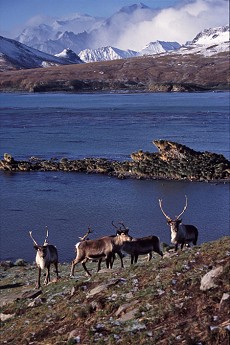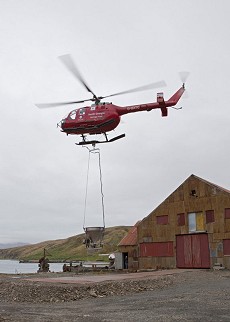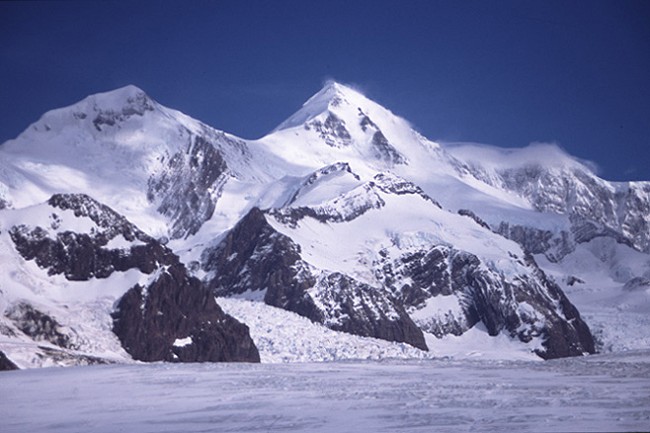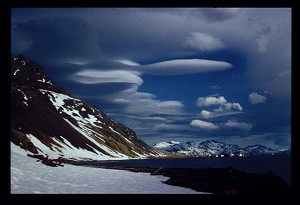
A reindeer cull and simultaneous pest eradication effort are being planned on the South Atlantic island of South Georgia, formerly one of the most important sea bird breeding sites in the world and now the subject of an ambitious Habitat Restoration Project.
The remote British Overseas Territory, governed from the Falkland Islands, is the most mountainous island in the seas around Antarctica, with heavily glaciated peaks up to 2900m high. The island was famously crossed by Antarctic explorer Ernest Shackleton as part of an epic rescue mission following the collapse of the Imperial Trans-Antarctic Expedition of 1914-17, and it continues to attract adventurers today as a wilderness mountaineering destination with a wealth of as-yet-unclimbed ground.

Reindeer are found naturally only in the northern hemisphere, but a handful were introduced to South Georgia by Norwegian whalers in the early years of the 20th Century, and the population has since risen to over 3000. Since there are no natural predators the animals now live at greater density than they would in the 'wild', damaging the fragile vegetation on which South Georgia's endangered native sea birds depend. Following consultation the Government of South Georgia and the South Sandwich Islands (GSGSSI) recently announced its intention to initiate a complete cull, and is currently establishing advisory groups to work on the methodology and timetable of the project. It looks like the island's flag, which features a reindeer, will have to be changed.
South Georgia also hosts a thriving rat and mouse population, likewise invaders and a major threat to ground nesting birds. Millions of birds, representing 31 different species, breed on the island, including the endangered black-browed albatross, vulnerable grey-headed albatross and white-chinned petrel. Rats and mice, inadvertently brought to the island by sealers and whalers from the late 1700's onwards, have had a devastating effect on the island's native ecosystem. In particular, huge numbers of ground-nesting birds, including endemic species such as the South Georgia pipit and South Georgia pintail, are eaten alive by rats each year and their eggs and chicks predated.
Rodent control is an essential part of the Habitat Restoration Project, which is being led, organised and financed by the South Georgia Heritage Trust (SGHT), a UK-based charity, with support from the GSGSSI, the British Antarctic Survey and the University of Dundee. Though run by different organisations the two culls are interlinked, since it would be impossible to remove the rodents with the reindeer in place without hundreds of deer being poisoned by mistake.
At present glaciers prevent rats reaching some sea bird populations, but there are fears that glacial retreat will allow them to spread further, and the only solution is thought to be total eradication. Rodent control has never been carried out on this scale before, and in such a challenging location – South Georgia is 170km long, almost totally uninhabited, and exposed to the challenging weather of the southern ocean.

'[The rat control] will be achieved by spreading tons of rodent bait pellets by helicopter over the entire land area where they occur, at an average rate of around one pellet per 10 square metres' Explain the SGHT in a recent statement. 'Two helicopters will be deployed throughout the operation, both for safety and because the scale of the task is greater than could be achieved with a single aircraft. Flying will be carried out between mid-February and mid-April each year. This is after the breeding season of most birds and before the first heavy snowfalls of winter.'
Anthony Martin, Project Director of the South Georgia Heritage Trust and Professor of Animal Conservation at the University of Dundee explains,
'We have a unique opportunity to roll back two centuries of human-induced damage to this stunning island and its wildlife. The scale of the challenge is daunting, but the conservation rewards cannot be over-stated; literally millions of seabirds will reclaim South Georgia from the rats. I am excited and privileged to play my part in this globally important operation.'
A limited-area trial to remove the rats and mice will run throughout March. The second phase of the operation to clear the remainder of the island will run from 2013 to 2015, then further monitoring will be undertaken throughout the island in 2016 and 2017 in order to ensure that no rats have survived.









Comments